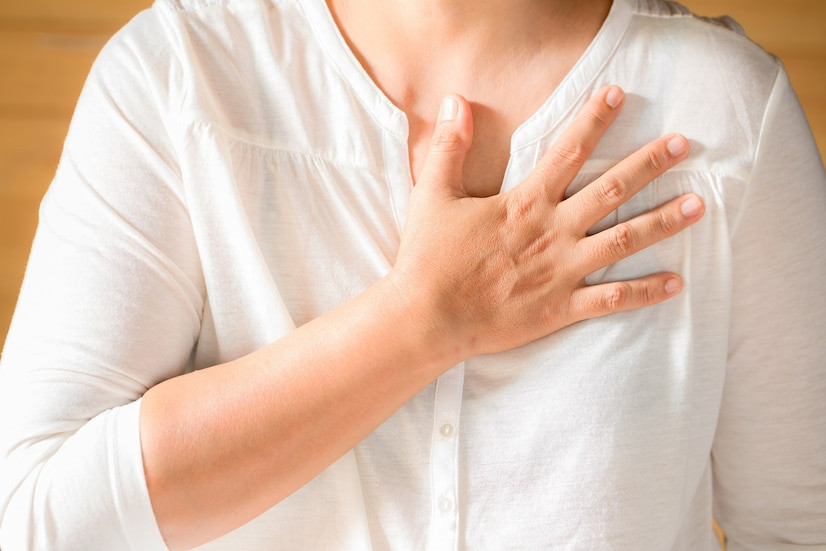Mammography, also known as mammograms, is a breast cancer screening procedure. The earlier mammography is performed, the better you can determine the risk of tumors, cysts, or other tissue abnormalities in the breast. So, when should mammography be performed?
What is mammography?
Aside from skin cancer, breast cancer is one of the most common cancers in women. The earlier breast cancer detection is performed, the earlier signs of breast cancer can be identified, and proper treatment can be initiated before symptoms appear.
Mammography is also used in women with breast tumors or cancer to detect new symptoms such as lumps, pain, abnormal discharge from the nipple, or changes in the texture of the breast skin.
Mammography can detect cancer, but it cannot diagnose it. Breast cancer can be diagnosed using additional tests, such as a biopsy.
A mammography examination involves beaming X-rays at the breast. During the examination, you will be asked to remove all jewelry and wear lead-based clothing to reduce radiation exposure.
During the examination, the breast will be placed on an x-ray machine with a compressor, which will compress the breast to obtain tissue imaging. You are asked to hold your breath while the compressor compresses the breast in order to achieve the best imaging results and minimize radiation exposure. If the results are unclear or there are tissue abnormalities, the mammography procedure can be repeated a few days after the results are released.
At what age should mammoraphy screening be performed?
According to Everyday Health, breast screening should begin when women reach the age of 40 and continue once a year until they reach the age of 74, based on the recommendations of the United States Preventive Service Task Force published in the journal JAMA.
Women who are at high risk due to genetic or other factors, on the other hand, can have their screenings earlier. Consider the following risk factors for early or routine mammography:
- Personal history of breast cancer
- Family history of breast or ovarian cancer
- Inherited genetic mutations, such as BRCA1 and BRCA2
- Certain benign (non-cancerous) breast diseases, such as atypical ductal hyperplasia and/or lobular neoplasia
If you have any of these risk factors, contact your doctor to schedule a mammography screening.Regular breast cancer screening can reduce the risk of developing breast cancer and improve survival rates.
Can breast cancer be prevented?
Genetic alterations in breast cells result in breast cancer. A healthy lifestyle can help prevent breast cancer by doing things like:
- Avoid drinking alcoholic beverages. Low doses of alcohol may increase the risk of developing breast cancer. In addition to breast cancer, alcoholic beverages increase the risk of liver cancer and heart disease. As a result, you should avoid drinking alcohol, particularly if you have risk factors for breast cancer.
- Maintain the ideal body weight. Obesity can also raise the risk of other chronic diseases. If you are overweight, you should begin to manage your weight by exercising and eating nutritious foods.
- Exercise regularly. Regular exercise and physical activity can help lower the risk of breast cancer. Exercise at least 150 minutes per week, or 30 minutes per day for five days. Walking, cycling, running, and strength training are all exercises that can be done twice a week.
- Eat a well-balanced diet. According to experts, the Mediterranean diet is one of the diets that can help reduce the risk of developing breast cancer. Increased consumption of vegetables, whole grains, nuts, and healthy fats like olive oil, fish, and red meat is thought to lower the risk of breast cancer.
Breastfeeding. The CDC reports that breastfeeding can help prevent breast cancer.
By the age of 40, mammography is one of the breast cancer screening techniques that should be performed on a regular basis. However, if you have risk factors or symptoms that warrant an additional breast exam, you can get a mammogram as directed by your doctor.
If you need medical advice or consultation, you can either visit a doctor or make use of the consultation features that are available in the Ai Care application by downloading the Ai Care application from the App Store or Play Store.
Looking for more information about other diseases? Click here!
- dr. Monica Salim
Upham, B. (2024). Women Should Start Getting Mammograms at Age 40, Not 50. Available from: https://www.everydayhealth.com/breast-cancer/women-should-start-getting-mammograms-at-age-forty/
Mayo Clinic. Mammogram guidelines: What are they?. Available from: https://www.mayoclinic.org/tests-procedures/mammogram/expert-answers/mammogram-guidelines/faq-20057759
John Hopkins Medicine. Mammogram Age Guidelines: What You Need to Know. Available from: https://www.hopkinsmedicine.org/health/treatment-tests-and-therapies/mammogram-age-guidelines#
Mayo Clinic. Breast cancer prevention: How to reduce your risk, Available from: https://www.mayoclinic.org/healthy-lifestyle/womens-health/in-depth/breast-cancer-prevention/art-20044676











